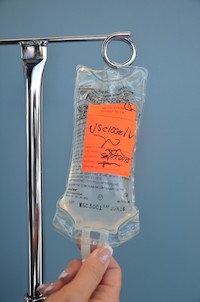There is currently a shortage of IV bags in the United States, primarily due to the impact of Hurricane Helene on a major manufacturing facility in North Carolina. This facility, operated by Baxter, produces approximately 60% of the IV solutions used daily in the U.S. The hurricane caused significant flooding, leading to a halt in production which has resulted in nationwide supply issues. Here’s what’s happening:
- Cause of Shortage: Hurricane Helene led to flooding at Baxter’s North Cove facility in Marion, NC, necessitating a cessation of production for IV and peritoneal dialysis solutions.
- Impact: This shutdown has affected hospitals across the country, prompting conservation efforts to manage the existing supply of IV fluids. The shortage is critical because these solutions are fundamental for various medical treatments, from hydration in emergency rooms to chemotherapy administration.
- Response: The American Hospital Association (AHA) has urged the Biden administration to declare this shortage a national emergency. This could lead to several actions like extending expiration dates of IV fluids, allowing importation from other countries, and using the Defense Production Act to increase production.
- Public and Institutional Awareness: There’s noticeable discussion on platforms like X (formerly known as Twitter) where users are expressing concern, calling for government intervention, and highlighting the broader implications of such a shortage on healthcare delivery.
- Potential for Further Shortages: With another hurricane, Milton, threatening other manufacturing areas, there’s a risk of exacerbating this shortage if additional facilities are impacted.
This situation underscores the vulnerability of medical supply chains to natural disasters and highlights the concentration risk when a significant portion of a critical supply is produced in one location. Hospitals and healthcare providers are managing through conservation, but the situation remains fluid with potential interventions from federal agencies expected to mitigate the impact.
🚨I have a friend currently admitted in a hospital in California awaiting emergency surgery and due to staff shortage it could be days before surgery.
— rooted.wings (@BrittRooted) October 7, 2024
The hospital cannot give her an IV bag because according to them, they DO NOT HAVE ANY IV BAGS due to Hurricane Helene.
So… pic.twitter.com/yqemiGDh1I
🚨 Alert 🚨 critical shortage of IV bags.
— Shawn Hendrix (@TheShawnHendrix) October 8, 2024
I ended up at the Dr needing an IV for dehydration they said they are rationing the bags due to this facility being closed. This is not fake news I drove by multiple times and thought man that place got rocked.
That place is Baxter… pic.twitter.com/gg8ug14jXR
